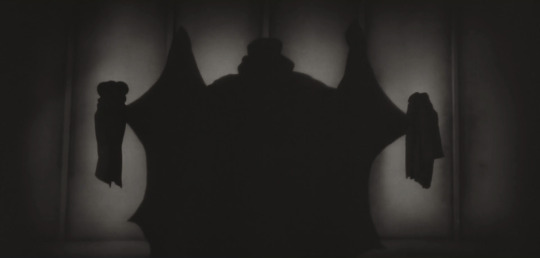#robert h. planck
Explore tagged Tumblr posts
Text









The Bat Whispers (1930)
[letterboxd | imdb]
Director: Roland West
Cinematographers: Robert H. Planck, Ray June
Performers: Richard Tucker, S.E. Jennings, ???
#1930s#1930#Roland West#Chester Morris#my gifs#pre-code#precode#classic movies#classic film#precode film#horror film#horror#suspense#cinematography#american film#cinema#classic cinema#spooky season#filmblr#film#flashing gif
21 notes
·
View notes
Text
Summer Stock (Charles Walters, 1950)
Cast: Judy Garland, Gene Kelly, Eddie Bracken, Gloria DeHaven, Marjorie Main, Phil Silvers, Ray Collins, Nita Bieber, Carleton Carpenter, Hans Conried. Screenplay: George Wells, Sy Gomberg. Cinematography: Robert H. Planck. Art direction: Cedric Gibbons, Jack Martin Smith. Film editing: Albert Akst. Music: Conrad Salinger; songs by Harry Warren, Mack Gordon, Saul Chaplin, Harold Arlen, Ted Koehler.
Summer Stock seems almost like a warmup for that string of great MGM musicals that followed: An American in Paris (Vincente Minnelli, 1951), Singin' in the Rain (Stanley Donen, Gene Kelly, 1952), and The Band Wagon (Minnelli, 1953). It doesn't have as good a song score as they do, and its screenplay lacks the wit that Alan Jay Lerner, Betty Comden, and Adolph Green provided for them. It has two great numbers: Judy Garland's "Get Happy" and Gene Kelly's solo in which he does miraculous things with a squeaky floorboard and a sheet of newspaper. But mostly it seems to be remembered as Garland's last film for MGM as she descended into the emotional wilderness of her later years. She was returning to the screen after being fired from Annie Get Your Gun (George Sidney, 1950), but she asked to be let out of her contract with MGM after completing Summer Stock. Aside from Kelly and Garland, there's not much else to recommend about the film. Eddie Bracken plays his usual nebbish with a sinus condition -- a variation on the character he played in Hail the Conquering Hero (Preston Sturges, 1944), and Phil Silvers does some overstated clowning. The plot is nonsense about a Broadway tryout being staged in the barn on the farm owned by Garland's character, with the usual gags about city slickers trying to feed chickens and milk cows. Garland's character is engaged to Bracken's, and Kelly's is having a fling with Garland's sister, played by Gloria DeHaven. Naturally, by film's end the sisters have switched partners. But the film belongs to Garland and Kelly whenever they're on screen, and a thumb ready for the fast-forward button to those moments gets a good workout.




Gene Kelly and Judy Garland in SUMMER STOCK (1950)
723 notes
·
View notes
Text
laughing while reading robert millikan’s 1916 “a direct photoelectric determination of planck’s h” he really called einstein an idiot for two pages just to conclude that einstein was, in fact, not an idiot
0 notes
Photo










A Woman's Face (George Cukor, 1941).
#a woman's face (1941)#george cukor#conrad veidt#joan crawford#robert h. planck#frank sullivan#cedric gibbons#edwin b. willis#adrian#a woman's face
127 notes
·
View notes
Photo

Lili (1953)
There is something whimsical about certain old Hollywood Studio System movies that makes it unimaginable that such films of that type would ever be greenlighted by studio executives today. One of those films is Charles Walters’ Lili, adapted from Paul Gallico’s 1950 short story “The Man Who Hated People”. Lili is a peculiar film that defies categorization – it is neither a pure drama or comedy, and it also lightly draws upon on elements from fantasy films and musicals. Given a turn towards mature themes in American cinema in the 1960s and 70s and long-standing cultural attitudes towards lighthearted fantasy, Lili might be insufferable to some. For those willing to give it a chance and allowing it to whisk them from anything resembling reality, Leslie Caron’s starring performance – two years following a triumphant screen debut opposite Gene Kelly in An American in Paris – elevates the flimsy material.
Sixteen-year-old Lili Daurier (Caron) is an orphaned country girl wandering post-WWII France, seeking a close friend to her recently-deceased father as she hopes to find employment. That friend has recently died, and his successor harasses Lili. She is rescued by a traveling carnival magician named Marc (Jean-Pierre Aumont). Lili becomes infatuated with Marc, as he secures her a job as a carnival waitress. But instead of waiting tables, Lili – who has never experienced magic tricks before – neglects her duties as she is transfixed with Marc’s dinnertime show. Lili is sacked as a result, with Marc displaying little sympathy for her naïveté. Told to home, Lili instead attempts suicide but not before the carnival’s puppeteer Paul (Mel Ferrer, who voices the puppets but does not control their movements) strikes conversation through his puppets. Lili obviously has never heard of or experienced a puppet show either, as she treats Paul’s cast of puppet characters as if they were real. Their interactions draw a crowd, thanks to Lili’s earnestness and belief that these puppets are her friends. Paul and his partner Jacquot (Kurt Kasznar) offer Lili a job of being part of the show. She accepts, and several of heartfelt conversations between girl and puppets follow.
A special type of performance is required for this film, and Caron’s acting is the appropriate mixture to make this amalgam of fantasy, musical, and drama work. Like numerous actors that might act in front of Big Bird or Kermit, Caron must treat the puppet characters as if they were real (the script demands it, in addition to the magic needed to make Lili work). With no Muppets or Sesame Street in the 1950s to act as a thespian precedent, Caron – as well as the puppeteers – drew from a then-popular television program named Kukla, Fran, and Ollie. From there, Caron and puppeteers Walton and O’Rourke (a famous cabaret puppeteer act) and George Latshaw must be attuned to the other’s nuances in physicality and personality. Never annoying nor cloying, Caron is simply in her element here. A few years prior, Caron was a teenage ballerina in a Paris troupe when she was noticed by an admiring Gene Kelly. With Kelly’s lobbying of Metro-Goldwyn-Mayer (MGM) executives, Caron became an MGM contractee before production on An American in Paris – Lili would be her fifth film with MGM and her second major starring role. Her appearance as the titular Gigi would be five years away.
The screenplay, written by Helen Deutsch, allows for some rather intimate exchanges of dialogue between Lili and the puppets as the puppets display their sensitivity to her anxieties and sources of joyfulness. This combination of excellent acting and puppetry as well as attentive screenwriting delivers Lili past sugary mediocrity.
For outside of the several puppet show scenes, Lili is overflowing with lackadaisical performances and a romance between Caron and Ferrer’s character that is never fully realized and is, frankly, a tinge unbelievable and creepy if one thinks too hard about it. Outside of Caron’s central performance, the remainder of the supporting cast feels wasted – whether they are playing caricatures (Zsa Zsa Gabor, like in so many of the films she starred in, is a peculiar afterthought) or are just there (Mel Ferrer, despite being billed second, dials in an undemanding, charisma-bereft turn that gets sucked into the mire of the story despite his obvious possessiveness... would his character just fucking smile for once?). When leaving the interactions between Caron and the puppets, Lili becomes a film without sturdy supports, with very little amid the meritorious production design from the team of Cedric Gibbons, Paul Groesse, Edwin B. Willis, and Arthur Krams. The film’s carnival tentpoles are on the verge of snapping at the slightest application of subplot stress.
A lushly-composed score by Polish-American Bronislau Kaper is rooted in the lone original song appearing in Lili. That song is “Hi-Lili, Hi-Lo” (Kaper wrote the melody, which sounds rather German for a film set in France; Deutsch with the lyrics), which appears in the first encounter between Lili and the puppets. It appears immediately after Lili’s most despairing episode – a song with heartbreaking lyrics becoming a source of immense uplift. “Hi-Lili, Hi-Lo” will never appear on a list on the most memorable musical moments from that musical factory known as MGM (okay, it was featured in 1976′s That’s Entertainment, Part II and it was a minor commercial hit that did better in continental Europe than America), but Kaper and Deutsch’s song embodies that MGM musical mentality to near-perfection. Sing though your head and heart might be in agony, these films espoused. Smile and put on the show because that’s what movie stars are meant to do.
Those who have seen La La Land (2016) and have seen next to zero MGM musicals may recognize a narrative device employed at Lili’s conclusion. Despite the fact Lili is not a pure musical, the sloppy narrative is concluded with an abstract sequence where Lili’s imagination and most internal thoughts are expressed through dance. This concluding scene is not as technically accomplished as other such sequences, instead appearing perfunctory.
It’s as if Charles Walters – a director with an established track record of solid musicals including Good News (1947), Easter Parade (1948), and Summer Stock (1950) – could not decide on what exactly he wished this film to be. The structure and the parameters for a worthwhile musical, maybe even a fantasy or light romance, is there. But Walters and Deutsch never commit to a direction, and Lili – even providing for Caron’s magnificent acting and the emotional fragility she brings to her character – suffers from that indecision. But that indecision is not enough to prevent me from ever recommending Lili to anyone. Its deficiencies make it fascinating to watch, returning viewers briefly to a time of prolonged innocence, when the world outside one’s doorstep was never anything but enthralling.
My rating: 7/10
^ Based on my personal imdb rating.
#Lili#Charles Walters#Leslie Caron#Mel Ferrer#Jean Pierre Aumont#Zsa Zsa Gabor#Kurt Kasznar#Amanda Blake#Bronislau Kaper#Robert H. Planck#Helen Deutsch#Cedric Gibbons#Paul Groesse#Edwin B. Willis#Arthur Krams#Paul E. Walton#Michael O'Rourke#George Latshaw#TCM#My Movie Odyssey
8 notes
·
View notes
Text
Ancient human species made ‘last stand’ 100,000 years ago on Indonesian island

When seafaring modern humans ventured onto the island of Java some 40,000 years ago, they found a rainforest-covered land teeming with life—but they weren’t the first humans to call the island home. Their distant ancestor, Homo erectus, had traveled to Java when it was connected to the mainland via land bridges and lived there for approximately 1.5 million years. These people made their last stand on the island about 100,000 years ago, long after they had gone extinct elsewhere in the world, according a new study assigning reliable dates to previously found H. erectus fossils. The finding suggests a trace of H. erectus DNA could live on in modern Southeast Asian populations, thanks to complex intermingling among the diverse humans who have lived in the region.
The newly dated fossils also bookend the existence of a remarkably long-lived human species, says Patrick Roberts, an archaeologist at the Max Planck Institute for the Science of Human History in Jena, Germany, who wasn’t involved with the study. “With this date, the duration of Homo erectus occupation in Southeast Asia is nearly three times as long as our [own] species has been on the planet,” he says. “There is no doubt it was successful.” Read more.
438 notes
·
View notes
Text












The Bat Whispers (1930)
[letterboxd | imdb]
Director: Roland West
Cinematographers: Robert H. Planck, Ray June
Performers: S.E. Jennings, Una Merkel, Spencer Charters, Chester Morris, Grayce Hampton, Charles Dow Clark, Maude Eburne, Gustav von Seyffertitz, Ben Bard
#1930s#1930#Roland West#Chester Morris#Una Merkel#my edits#pre-code#precode#classic movies#classic film#precode film#horror film#film stills#horror#suspense#cinematography#american film#cinema#classic cinema#spooky season#filmblr#film
14 notes
·
View notes
Photo

Summer Stock (1950) // Dir. Charles Walters
Cinematography: Robert H. Planck
#summer stock#1950#charles walters#cinematography#robert h planck#robert planck#judy garland#beauty#movies#vintage#50s
3 notes
·
View notes
Link
Climatologue, ancien professeur au MIT, membre de l’Académie américaine des sciences, Richard Lindzen est l’un des meilleurs connaisseurs du réchauffement global. Il dénonce un formidable aveuglement collectif qui risque de coûter très cher à la science. Entretien.

Quels sont les points de science climatique qui font véritablement consensus ? 1. Il fait maintenant environ 1 °C de plus qu’à la fin du petit âge glaciaire. 2. Le CO2 est un gaz à effet de serre. 3. L’augmentation du CO2 devrait entraîner un certain réchauffement. 4. Le CO2 augmente. 5. Les activités humaines contribuent à l’augmentation du CO2. 6. Le climat a changé tout au long de l’histoire de la Terre.
Le point 5 est le seul qui fasse l’objet d’un certain désaccord. Eu égard à ces différents éléments, il n’y a aucune justification scientifique à l’alarmisme.
En particulier, pourquoi n’y a-t-il rien à craindre de l’affirmation : “La majeure partie du réchauffement des cinquante dernières années est due à l’homme” ? Cette affirmation n’est pas alarmante parce que, premièrement, il s’agit de petits changements. Un quart de degré Celsius représenterait environ 51 % du réchauffement récent. Compte tenu de l’incertitude dans les données et l’analyse qui en est faite, il s’agit d’un résultat que l’on peut à peine distinguer de zéro. Cette incertitude est attestée par les ajustements couramment appliqués au suivi des températures, qui sont d’un ordre de grandeur similaire. Deuxièmement, le réchauffement récent n’est pas du tout sans précédent ; la période de réchauffement presque identique entre 1919 et 1940 ne pourrait pas être attribuée à l’homme. Troisièmement, le réchauffement observé est tout à fait compatible avec une faible sensibilité du climat. L’alarmisme serait de mise pour, au minimum, une sensibilité élevée.
Pouvez-vous expliquer cette notion clé de “sensibilité du climat” ? Par sensibilité, nous entendons le réchauffement attendu pour chaque doublement des émissions de CO2. Une sensibilité élevée est généralement considérée comme 3 °C ou plus. On parle de sensibilité à l’équilibre, qui est le réchauffement atteint une fois que le système atteint l’équilibre. En considérant des intervalles de temps spécifiques, il faut utiliser des modèles temporels pour déterminer la sensibilité transitoire. Si nous devions supposer que “tous” les réchauffements des cinquante dernières années étaient dus à l’ajout de gaz à effet de serre, nous pourrions conclure que la sensibilité à l’équilibre serait d’environ 1 °C.
Peu de scientifiques adhèrent à l’idée que la planète est en danger alors que, parmi les catastrophistes, c’est la norme…
Comment les modèles avec une sensibilité plus élevée parviennent-ils à reproduire les cinquante dernières années ? Ils le font en soustrayant de l’effet de serre des aérosols essentiellement inconnus, qu’ils incluent ensuite comme étant dus aux émissions humaines. Cependant, dans un article récent du Max Planck Institut, Stevens constate que les aérosols sont limités et incapables de compenser les sensibilités plus élevées. Si l’homme ne représente que 51 % du réchauffement, alors un réchauffement même modeste devient peu plausible. Il convient de noter que le réchauffement d’environ 1 °C depuis le XIXe siècle s’est accompagné d’une amélioration de tous les indices du bien-être humain, y compris la qualité de l’environnement !
Est-il vrai que même les partisans du réchauffement climatique ne sont pas d’accord avec les affirmations extrêmes ? Les scientifiques qui conviennent qu’il faut se soucier du changement climatique reconnaissent que le catastrophisme est sans fondement. Mike Hulme, fondateur du Tyndall Centre de l’Université d’East Anglia (très en pointe sur le réchauffement climatique), a par exemple dit que « déclarer que le changement climatique sera catastrophique cache une cascade d’hypothèses à charge qui ne sont pas issues de la science empirique ou théorique ». Ou encore Gavin Schmidt, le successeur de Jim (James) Hansen à la tête du Goddard Institute of Space Studies de la NASA, dont le site Web (realclimate.org) est très partisan de la thèse du réchauffement climatique, qui a écrit que « les déclarations générales sur les extrêmes sont presque absentes de la littérature scientifique mais semblent abonder dans les principaux médias (…) . La perception populaire veut que le réchauffement climatique signifie que tous les extrêmes doivent augmenter sans cesse, alors que quelques secondes de réflexion suffisent pour réaliser que cela n’a aucun sens ».
Je rappelle que la théorie météorologique élémentaire nous dit que les événements extrêmes dépendent en grande partie de la différence de température entre les tropiques et les pôles — qui, dans un monde plus chaud, devrait diminuer ! Peu de scientifiques adhèrent à l’idée que la planète est en danger alors que, parmi les catastrophistes, c’est la norme…
Vous déplorez le manque de culture scientifique dans nos sociétés modernes ; est-ce si important ? Ce n’est pas seulement l’absence de culture scientifique qui pose un problème, c’est aussi l’absence de toute notion d’ordre de grandeur. Ainsi, beaucoup de gens s’inquiètent de savoir si la température augmente ou diminue, mais ils ne se soucient pas de savoir dans quelle mesure. Ils deviennent alors vulnérables à l’idée bizarre que tout réchauffement, aussi petit soitil, est un funeste présage. Ils ne comprennent pas non plus qu’en science, un événement n’a valeur de preuve que s’il a été prédit de façon univoque. Ils considèrent au contraire que tout événement constitue une preuve, même s’il n’a pas été prédit de façon univoque ou même si son contraire avait été prédit.
À partir de quand le discours sur le changement climatique est-il devenu si “dramatique”, et pourquoi ? Dans les années 1970, la communauté scientifique désignait régulièrement des périodes climatiques chaudes comme “optima climatiques”. Le fait que le CO2 était essentiel pour les plantes et constituait en réalité un engrais était aussi tout à fait compris. Il n’est donc pas surprenant que les premiers mouvements écologistes aient choisi de promouvoir la crainte d’un refroidissement climatique qui, comme on pouvait s’y attendre, était attribué aux émissions industrielles, en particulier les sulfates. Cependant, à la fin des années 1970, lorsqu’on s’est rendu compte que la désulfuration était possible, que le CO2 était le vrai produit irréductible des émissions industrielles, que ses émissions étaient susceptibles de contribuer au réchauffement plutôt qu’au refroidissement, et enfin qu’il existait un processus hypothétique par lequel ce réchauffement pouvait être amplifié (ce que l’on a fini par appeler la rétroaction de la vapeur d’eau), tout le récit s’est inversé. Le réchauffement jusqu’alors décrit comme optimal est devenu une conséquence à craindre. Ce n’est qu’à la suite de la décision de tirer la sonnette d’alarme sur le réchauffement climatique que l’effet de serre est devenu un élément central du discours sur le climat.
L’enjeu du changement climatique est extrême car un grand nombre d’intérêts particuliers ont de fortes motivations pour croire aux allégations catastrophistes, et ce malgré le manque de preuves.
Frank Press, le conseiller scientifique du président des États-Unis Jimmy Carter, a demandé au National Research Council d’enquêter sur la question, ce qui a mené au célèbre rapport Charney de 1979. Ce rapport résumait les conclusions des modèles climatiques primitifs de cette période et révélait que ces modèles présentaient une gamme de sensibilités du climat à la suite du doublement du CO2 dans l’atmosphère allant de 1,5 à 4,5 °C. Le rapport considérait de tels résultats comme possibles, mais accordait peu de crédibilité aux modèles, soulignant la nécessité de mieux comprendre pourquoi les modèles se comportaient comme ils le faisaient. Le rapport a néanmoins donné une certaine crédibilité à l’hypothèse du réchauffement climatique. Ensuite, il a fallu, pour convaincre, répéter et répéter encore. Il en allait de même pour l’affirmation, que l’on retrouvait déjà en 1988 dans Newsweek, que « tous les scientifiques étaient d’accord ». Le grand public n’avait donc aucune raison de creuser le travail scientifique pour se faire sa propre idée. On pourrait donc dire que le récit a été “dramatisé” dès que la question a été amenée dans le débat public. Voyez plutôt Sauver la planète Terre, l’écologie et l’esprit humain, d’Al Gore, et Dead Heat : the Race Against the Greenhouse Effect, de Michael Oppenheimer et Robert H. Boyle, tous deux publiés autour de 1990. La transformation du réchauffement climatique en catastrophisme climatique est si invraisemblable, pour ne pas dire complètement absurde, qu’on ne saurait guère par où commencer. Il est crucial de mettre l’accent sur le catastrophisme, car la situation est rendue encore plus incohérente par un amalgame volontaire entre des résultats élémentaires, qui sont largement acceptés mais qui n’ont aucune implication catastrophique, avec le catastrophisme lui-même.
Vous affirmez qu’il est dans l’intérêt de nombreux groupes de personnes de nous faire croire à la catastrophe. Pouvez-vous les citer ? L’enjeu du changement climatique est extrême car un grand nombre d’intérêts particuliers ont de fortes motivations pour croire aux allégations catastrophistes, et ce malgré le manque de preuves. On peut citer pêle-mêle : les économistes de gauche, pour qui le réchauffement climatique représente un exemple suprême de défaillance des marchés, ainsi qu’une merveilleuse occasion de proposer des mesures correctives ; les apparatchiks de l’Onu, pour qui le réchauffement climatique est la voie vers une gouvernance mondiale ; les dictateurs du tiers-monde, qui considèrent la culpabilité liée au réchauffement climatique comme un moyen pratique de réclamer des aides, c’est-à-dire d’opérer un transfert de richesses entre les pauvres des pays riches et les riches des pays pauvres ; les militants écologistes, pour qui tout enjeu de société est bon à prendre s’il peut effrayer les naïfs et les inciter à faire d’importantes contributions à leurs nombreuses ONG ; les ploutocrates, qui voient les énormes sommes d’argent mises à disposition pour l’énergie “durable” ; les organismes de régulation gouvernementaux, pour qui contrôler un produit naturel de la respiration est un rêve devenu réalité ; les milliardaires de la Tech qui trouvent que l’enjeu de “sauver la planète” est à la hauteur de l’idée qu’ils se font d’eux-mêmes ; enfin, les politiciens, qui profitent du réchauffement climatique pour agir en démagogues sans crainte d’être contredits par la réalité, ou de subir les plaintes des prétendus bénéficiaires de leurs actions… À tout cela s’ajoutent les militants, les experts, les conseillers, etc.
Vous faites référence à un “triangle de fer” ; que représente cette image pour vous ? C’est une image que j’utilise pour décrire le fonctionnent de la dynamique entre scientifiques, politiciens et médias… À un sommet du triangle se trouvent les scientifiques, qui affirment des choses nuancées ou ambiguës ; l’évaluation scientifique du groupe de travail numéro un du Giec en regorge. Au deuxième sommet se situent les promoteurs de la cause climatique et les médias qui “traduisent” ces affirmations en déclarations alarmistes ; ce groupe inclut également les groupes de travail numéros 2 et 3 du Giec, qui traitent des impacts et de la mitigation en adoptant les scénarios catastrophe du groupe de travail numéro 1 comme postulats de départ. Au troisième sommet, on trouve les politiciens, qui répondent aux thèses alarmistes en allouant plus d’argent aux scientifiques du premier sommet. Si un scientifique venait à se sentir coupable de participer à un tel système, deux facteurs irrésistibles auraient raison de ses états d’âme : ce sont les promoteurs de la cause climatique qui définissent les codes de la nouvelle vertu publique, et les administrateurs ou les directeurs de laboratoire, toujours ravis de recevoir les bourses et subventions qui y sont liées.
Qu’entendez-vous par l’expression “science à la demande” ? J’entends qu’il y a des scientifiques qui, lorsque les résultats ne satisfont pas les politiques alarmistes, sont prêts à “réanalyser” les données afin d’obtenir satisfaction. Ainsi, lorsque le Giec n’a pas réussi à établir la correspondance événements extrêmes-changement climatique, Benjamin Santer a inventé une procédure absurde qui présupposait que les modèles représentaient correctement la variabilité interne naturelle du climat (ce qui n’est évidemment pas le cas) afin de prétendre que la correspondance était établie. Lorsqu’il est devenu évident que le réchauffement observé depuis le petit âge glaciaire était faible et qu’un réchauffement comparable était associé à l’optimum climatique médiéval, Michael Mann a créé une analyse bizarre qui éliminait l’optimum climatique médiéval et (concluait) que le réchauffement actuel était « sans précédent ».
La science est en train de perdre sa raison d’être, âprement méritée, qui faisait d’elle l’outil humain le plus efficace pour l’évaluation objective .
En fait, sa méthode de remplacement était calibrée pour une période de trente ans de données instrumentales, ce qui a entraîné “l’élimination” de l’optimum climatique médiéval. Lorsque sa méthode a été testée sur la période subséquente de données instrumentales, elle a montré un refroidissement plutôt qu’un réchauffement ; Mann a simplement remplacé la deuxième série de données par les données observées, produisant ainsi le fameux graphique en “crosse de hockey”. Lorsque les données observées n’ont révélé aucun réchauffement statistiquement significatif après 1998, Tom Karl, du centre météorologique NOAA à Asheville, a “réanalysé” les données pour montrer que le réchauffement se poursuivait ; mais, malgré son ajustement, le réchauffement qu’il a constaté était encore bien inférieur aux prévisions des modèles. Or, il n’a pas mentionné ce fait. Des marégraphes soigneusement sélectionnés dans des endroits stables sur le plan tectonique ne montrent aucune accélération de l’élévation du niveau de la mer pendant au moins un siècle. Toutefois, plusieurs groupes soutiennent que l’élévation du niveau de la mer s’est accélérée. Pour soutenir cette thèse, ils ont pris des mesures inexactes du niveau de la mer à partir du satellite Topex qui montrent un taux environ deux fois supérieur à celui indiqué par les marégraphes ; ils ont ensuite supposé que les données issues des marégraphes étaient correctes, jusqu’à ce que les données satellites deviennent disponibles. Ils ont alors remplacé les données des marégraphes par les données satellites, et appelé la différence entre les deux « accélération ».
Quels sont les points les plus faibles du scénario de réchauffement climatique du Giec ? Toutes les affirmations qui concernent des possibilités alarmantes sont, au mieux, très faibles. Il serait futile d’en mettre certaines en exergue car cela suggérerait que les autres pourraient être valables.
Enfin, pourquoi considérez-vous que la science est davantage en danger que la planète ? La science est en train de perdre sa raison d’être, âprement méritée, qui faisait d’elle l’outil humain le plus efficace pour l’évaluation objective ; cela signifie perdre les fondements de la confiance et du soutien du public. Si nous ne faisons rien pour arrêter cette folie, la science sera, à juste titre, considérée comme une arnaque parmi d’autres.
1 note
·
View note
Photo










Little Women (Mervyn LeRoy, 1949).
#mervyn leroy#little women (1949)#robert h. planck#charles schoenbaum#ralph e. winters#cedric gibbons#paul groesse#edwin b. willis#walter plunkett#little women
268 notes
·
View notes
Text
GENI@S MATEMÁTICOS FÍSICOS Y QUÍMICOS MÁS DESTACAD@S DE LA HISTORIA
A
Abraham Ben Ezra
Ada Lovelace
Adam Smith
Al Batani
Al Juarismi
Alan Turing
Albert Einstein
Alessandro Volta
Alexander Borodin
Alfred Nobel
Amadeus Avogadro
André Marié Ampéré
Andrew Wiles
Andrews Millikan
Antonie Lavoisier
Apolonio P��rgamo
Aristóteles
Arquímedes Siracusa
Aryabhata
Arzaquel
B
Bernhard Riemann
Bertrand Russell
Bháskara
Bill Gates
Blase Pascal
Bonaventura Cavalieri
Brahmagupta
Brook Taylor
C
Christian Huygens
Christian Orsted
Claudio Ptolomeo
Colin Maclaurin
D
Daniel Bernoulli
David Anderson
David Hilbert
Dimitri Mendeleev
Diofanto Alejandría
E
Edwin Hubble
Emmy Noether
Enrico Fermi
Eratóstenes Cirene
Ernest Rutherford
Erwin Schrodinger
Euclides Alejandría
Eudoxo Cnido
Evangelista Torricelli
Evariste Galois
F
Francis Crick
François Viète
Franz Hess
Friedrich Wohler
G
Gabriel Cramer
Galileo Galilei
Geber Ibn Aphla
Georg Cantor
Georg Öhm
George Boole
Gilbert Lewis
Girolamo Cardano
Gottfried Wilhelm Leibniz
Guillaume L'Hôpital
Guillermo Marconi
H
Hiparco Nicea
Heinrich Hertz
Hendrik Lorentz
Henry Becquerel
Hermann von Helmholtz
Herón Alejandría
Hideki Yukawa
Humphry Davy
Hypatía Alejandría
I
Isaac Barrow
Isaac Newton
J
Jacob Bernoulli
James Joule
James Maxwell
James Watson
Jean Baptiste Fourier
Jean Le Rond D'Alembert
Johann Bernoulli
Johannes Kepler
John Dalton
John Forbes Nash
John Neper
Johnn von Neumann
Jons Berzelius
Joseph Priestley
Joseph Thomson
Jules Henry Poincaré
Julian Schwinger
K
Karl Friedrich Gauss
Karl Gustav Jacobi
Karl Wilhelm Weierstrass
Kurt Gödel
L
Leonard Euler
Leonardo Fibonacci
Linus Pauling
Louis Cauchy
Louis Lagrange
Louis Pasteur
Luca Pacioli
Luca Valerio
Ludwig Boltzmann
M
Marie Curie
Maurice Wilkins
Max Born
Max Planck
Michael Faraday
Murray Gell Mann
N
Niccolo Tartaglia
Nicola Tesla
Nicolás Copérnico
Nicolás Lobatchevski
Nicolás Oresme
Niels Böhr
Niels Henrik Abel
O
Omar Jayam
P
Paul Dirac
Peter Lejeune Dirichlet
Pierre Alphonse Laurent
Pierre Fermat
Pierre Laplace
Pitágoras Samos
Platón
R
Raymundo Lulio
René Descartes
Richard Feynman
Robert Boyle
Robert Oppenheimer
Rosalind Franklin
S
Shin'ichiro Tomonaga
Simon Stevin
Sócrates
Sophie Germain
Srinivasa Ramanujan
Stephen Hawkins
Steve Jobs
T
Thales Mileto
Thomas Edison
W
Werner Heisenberg
Z
Zenón Elea
2 notes
·
View notes
Photo

Joan Crawford in A Woman's Face (George Cukor, 1941) Cast: Joan Crawford, Melvyn Douglas, Conrad Veidt, Osa Massen, Reginald Owen, Albert Bassermann, Marjorie Main, Donald Meek, Connie Gilchrist, Richard Nichols, Henry Kolker, George Zucco, Henry Daniell. Screenplay: Donald Ogden Stewart, Elliot Paul, based on a play by Francis de Croisset. Cinematography: Robert H. Planck. Art direction: Cedric Gibbons. Film editing: Frank Sullivan. Music: Bronislau Kaper. I don't know why the screenplay for A Woman's Face is credited as an adaptation of the play Il Était une Fois by Francis de Crosset with no mention of the 1938 Swedish film En Kvinnas Ansikte, directed by Gustaf Molander and starring Ingrid Bergman. The 1941 A Woman's Face is clearly a remake of that film, which was released in the United States in 1939. Both films are set in Sweden, when as far as I can tell, de Croisset set his play in France, and both Bergman and Joan Crawford play characters named Anna Holm. Moreover, Crawford had seen Bergman's film and pressured MGM to buy the rights to it for her. As well she should have: Although Louis B. Mayer reportedly objected to Crawford's determination to play a disfigured woman, thinking it would hurt her at the box office just as she was entering her mid-30s, a dangerous time for a female movie star, the film gave Crawford a chance to show her stuff -- to play vulnerable as well as tough. She starts off tough, as a member of a gang of blackmailers, then softens when Torsten Barring begins to woo her, apparently indifferent to her scarred face. But since he's played by Conrad Veidt, we know he's up to no good. Meanwhile, another man, the cosmetic surgeon Dr. Segert (Melvyn Douglas), enters Anna's life -- ironically, since his wife is the target of one of the gang's blackmail schemes. Several implausible plots begin to intersect and everything winds up in court with Anna accused of murder. Flashbacks abound as everything gets sorted out. Meanwhile, Crawford acts up a storm in a role that's a bridge between her younger, scrappy MGM persona and the put-upon middle-aged women of her later career at Warner Bros.
0 notes
Text
Colliding Neutron Stars May Unlock Mysteries of Universe Expansion
The National Science Foundation’s Arecibo Observatory in Puerto Rico has proven itself instrumental in another major astronomical discovery.
An international team of scientists, led by the University of East Anglia in the United Kingdom, found an asymmetrical double neutron star system using the facility’s powerful radio telescope. This type of star system is believed to be a precursor to merging double neutron star systems like the one that the LIGO (the Laser Interferometer Gravitational-Wave Observatory in the United States)/Virgo discovered in 2017. The LIGO/Virgo observation was important, because it confirmed the gravitational waves associated with merging neutron stars.
The work published by this team today in the journal Nature, indicates these specific kinds of double neutron star systems may be the key to understanding dead star collisions and the expansion of the universe.
“Back in 2017, scientists at LIGO/Virgo first detected the merger of two neutron stars,” says physicist Robert Ferdman, who led the team. “The event caused gravitational-wave ripples through the fabric of space time, as predicted by Albert Einstein over a century ago. It confirmed that the phenomenon of short gamma-ray bursts was due to the merger of two neutron stars.”
One of the unique aspects of the 2017 discovery and today’s is that the double neutron systems observed are composed of stars that have very different masses. Current theories about the 2017 discovery are based on the masses of stars being equal or very close in size.
“The double neutron star system we observed shows the most asymmetric masses amongst the known merging systems within the age of the universe,” says Benetge Perera, a UCF scientist at Arecibo who co-authored the paper. “Based on what we know from LIGO/Virgo and our study, understanding and characterizing of the asymmetric mass double neutron star population is vital to gravitational wave astronomy.”

Observatory Scientist Benetge Perera.
Perera, whose research is focused on pulsars and gravitational waves, joined the NSF-funded Arecibo Observatory in June 2019. The facility, which is managed by the University of Central Florida through a cooperative agreement with the NSF, offers scientists around the world a unique look into space because of its specialized instruments and its location near the equator.
The Discovery
The team discovered an unusual pulsar – one of deep space’s magnetized spinning neutron-star ‘lighthouses’ that emits highly focused radio waves from its magnetic poles.
The newly discovered pulsar (known as PSR J1913+1102) is part of a binary system – which means that it is locked in a fiercely tight orbit with another neutron star.
“The Arecibo Observatory has a long legacy of important pulsar discoveries,” says NSF Program Officer, Ashley Zauderer. “This exciting result shows how incredibly relevant the facility’s unique sensitivity remains for scientific investigations in the new era of multi-messenger astrophysics.”
Neutron stars are the dead stellar remnants of a supernova explosion. They are made up of the densest matter known – packing hundreds of thousands of times the Earth’s mass into a sphere the size of a city like New York.
In about half a billion years the two neutron stars will collide, releasing astonishing amounts of energy in the form of gravitational waves and light.
That collision is what the LIGO/Virgo team observed in 2017. The event was not surprising, but the enormous amount of matter ejected from the merger and its brightness was unexpected, Ferdman said.
“Most theories about this event assumed that neutron stars locked in binary systems are very similar in mass,” Ferdman says. “But this newly discovered binary is unusual because the masses of its two neutron stars are quite different – with one far larger than the other. Our discovery changes these assumptions.”
This asymmetric system gives scientists confidence that double neutron star mergers will provide vital clues about unsolved mysteries in astrophysics – including a more accurate determination of the expansion rate of the universe, known as the Hubble constant.
Other members on the discovery team are: P.C.C. Freire from the Max-Planck Institute f¨ur Radioastronomie in Germany, F. Camilo from the South African Radio Astronomy Observatory, J.M. Cordes from Cornell University, F. Crawrod from Franklin and Marshall College, J.W. T. Hessels from the University of Amsterdam and the Netherlands Institute for Radio Astronomy, V. M. Kaspi and E. Parent from McGill University, N. Pol from West Virginia University, I. H. Stairs from University of British Columbia. And J. van Leeuwen from the Netherlands Institute for Radio Astronomy.
Perera has multiple degrees including a doctorate in physics from West Virginia University. He’s authored or co-authored dozens of peer-reviewed journal articles and presented at conferences around the world. He previously taught at the University of Manchester and was a summer scholar at Purdue University.
source https://scienceblog.com/517262/colliding-neutron-stars-may-unlock-mysteries-of-universe-expansion/
0 notes
Text
Regensburg: Abbruch der südlichen Autobahnbrücke über die Max-Planck-Straße

Regensburg - Von Samstag, 07. März 2020 ab ca. 20:30 Uhr, bis Sonntagnachmittag, 08. März 2020 ca. 14:30, Uhr wird im Zuge des 6-streifigen Ausbaus der A 3 die südliche Autobahnbrücke über die Max-Planck-Straße abgebrochen. Während der Arbeiten ist die Max-Planck-Straße unterhalb der A 3 für den Verkehr voll gesperrt. Eine Umleitungsstrecke ist ausgeschildert. Der Verkehr auf der Autobahn ist von der Sperrung der Max-Planck-Straße nicht betroffen. An der Anschlussstelle Regensburg-Ost kann in beiden Fahrtrichtungen aus der Autobahn aus- und in die Autobahn eingefahren werden – eine Querung der Autobahn im Bereich der Anschlussstelle Regensburg-Ost ist auf der Max-Planck-Straße jedoch nicht möglich. Umleitung auch für Fuß- und Radverkehr Der Verkehr auf der Max-Planck-Straße wird während des Abbruchs in beiden Richtungen über die Obertraubling Straße, die Landshuter Straße und den Odessa-Ring umgeleitet. Für den Fuß- und Radverkehr ist ein Ausweichen über die Leibnizstraße, die Junckersstraße und die Robert-Bosch-Straße möglich. Die Umleitungskarte steht auf der Projektwebseite www.a3-regensburg.de/service zur Ansicht und zum Download bereit. Fakten zum Brückenabbruch Die südliche Autobahnbrücke über die Max-Planck-Straße ist knapp 41 Meter lang und 22 Meter breit. Rund 20 Mitarbeiter werden die Brücke mit schwerem Gerät innerhalb der 18 Stunden Sperrzeit abbrechen und grob zerkleinern. Per Lkw werden die rund 1.900 Tonnen schweren Abbruchmassen dann fortlaufend zu temporären Lagerflächen in der unmittelbaren Nähe transportiert. So ist sichergestellt, dass die Arbeiten in kürzester Zeit durchgeführt werden. Nach dem Abbruch der Brücke schließen sich im Abbruchbereich die Aufräumarbeiten an. Das unbefugte Betreten der Baustelle ist lebensgefährlich. Für den Neubau der Brücke werden nach Abschluss der Abbrucharbeiten im Baustellenbereich auf Höhe der A 3 die Fahrspuren der Max-Planck-Straße verengt. Der Abbiegestreifen zur Autobahnauffahrt in Fahrtrichtung Nürnberg steht verkürzt zur Verfügung. In beiden Fahrtrichtungen gilt aus Sicherheitsgründen eine Höchstgeschwindigkeit von 30 km/h. Eine weitere Sperrung der Max-Planck-Straße ist für das Wochenende 27./ 28. Juni 2020 für das Einheben von Trägern vorgesehen. Der Neubau der Brücke dauert vsl. bis November 2020. Hinweis zur Brückenbaustelle Augsburger Straße: Veränderte Verkehrsführung auf der Autobahn Seit Mitte Februar wird im Bereich der Brückenbaustelle Augsburger Straße – östlich des Autobahnkreuzes Regensburg - auf der Autobahn die südliche Fahrbahn in Richtung Passau verbreitert, um Platz für eine nachfolgende „Inselbaustelle“ zu schaffen. Die Verbreiterungsarbeiten werden bis Mitte April abgeschlossen, um anschließend in die Pfeiler für die neue Brücke der Augsburger Straße herstellen zu können. Lesen Sie den ganzen Artikel
#A3-Ausbau#Abbruch#Abriß#Autobahnbrücke#Max-Planck-Straße#nachrichten#news#Regensburg#verkehr#Vollsperrung
0 notes
Text
10 σημαντικές επιστημονικές ανακαλύψεις της περασμένης δεκαετίας

Πηγή εικόνας: andrewkaufman.co.uk Οι επιστημονικές ανακαλύψεις της περασμένης δεκαετίας ήταν πολλές και αξιόλογες σε όλους τους τομείς. Λίγες μέρες μετά το τέλος της δεκαετίας και στην αρχή της επόμενης είναι η κατάλληλη στιγμή για μια ανακεφαλαίωση. Μπορεί να μην το συνειδητοποιούμε αλλά μέσα στην περασμένη δεκαετία η επιστήμη πέτυχε πολλά. Ας δούμε λοιπόν τις πιο σημαντικές ανακαλύψεις στη Φυσική, την Αστρονομία, τη Γενετική, την Ιατρική, την Ανθρωπολογία.
Επιστημονικές ανακαλύψεις σε Φυσική και Αστρονομία
1)Ο Einstein και τα βαρυτικά κύματα Ας αρχίσουμε από τον ορισμό των βαρυτικών κυμάτων. Σύμφωνα με τον Einstein, ο χώρος και ο χρόνος είναι μία ενιαία έννοια και λέγεται χωροχρόνος. Όταν ο χωροχρόνος διαταράσσεται, δημιουργούνται τα βαρυτικά κύματα, όπως αν ρίξουμε ένα βότσαλο μέσα σε μια λίμνη, η επιφάνεια του νερού θα διαταραχθεί και θα δημιουργηθούν ρυτιδώσεις. Ο Einstein είχε προβλέψει την ύπαρξη των βαρυτικών κυμάτων ήδη από το 1916. Όμως οι επιστήμονες δεν είχαν καταφέρει να τα ανιχνεύσουν μέχρι το 2015. To 2015, το LIGO (Laser Interferometer Gravitational Wave Observatory) ανίχνευσε για πρώτη φορά τα βαρυτικά κύματα που προήλθαν από τη σύγκρουση και συγχώνευση ανάμεσα σε δύο μαύρες τρύπες, η οποία συνέβη πριν από 1,3 δις χρόνια! Το γεγονός αυτό ήταν μία από τις σημαντικότερες ανακαλύψεις της δεκαετίας (και όχι μόνο).

Καλλιτεχνική απεικόνιση δύο αστέρων νετρονίων που συγκρούονται και εκτοξεύον στο διάστημα, χρυσό, λευκόχρυσο και ουράνιο Πηγή εικόνας: ligo.caltech.edu Στη συνέχεια το LIGO το 2017, ανίχνευσε βαρυτικά κύματα για δεύτερη φορά, που αυτή τη φορά προέρχονταν από τη σύγκρουση δύο αστέρων νετρονίων. Οι επιστήμονες μπόρεσαν μάλιστα να δουν με τα τηλεσκόπια το αστρονομικό αυτό φαινόμενο. Έτσι, για πρώτη φορά στην ιστορία είχαμε ήχο και εικόνα για το ίδιο φαινόμενο. Οι επιστήμονες που συμμετείχαν στην ανακάλυψη των βαρυτικών κυμάτων τιμήθηκαν με το Νόμπελ Φυσικής το 2017.
2) Εντοπίζοντας το μποζόνιο Higgs ή αλλιώς το «σωματίδιο του Θεού»
Μία από τις σημαντικότερες επιστημονικές ανακαλύψεις της περασμένης δεκαετίας ήταν σίγουρα το «σωματίδιο του Θεού» ή μποζόνιο Higgs, που ανακαλύφτηκε το 2012 στον επιταχυντή σωματιδίων του CERN. Στο σωματίδιο αυτό αναφέρθηκε για πρώτη φορά, ο Peter Higgs το 1964, ο οποίος το 2013 μετά την παρατήρηση του σωματιδίου στο CERN, πήρε το Νόμπελ Φυσικής. Το μποζόνιο Higgs ήρθε να απαντήσει στο ερώτημα: «Πώς αποκτούν μάζα τα σωματίδια;» Οι Robert Brout, François Englert και Peter Higgs πρότειναν το πεδίο Higgs, ένα πεδίο δυνάμεων, μαζί με το ομώνυμο σωματίδιο. Όσο περισσότερο επιδρά ένα σωματίδιο με το πεδίο Higgs τόσο περισσότερη μάζα αποκτά.
3)Η ανακάλυψη του πρώτου πιθανώς κατοικήσιμου εξωπλανήτη

Καλλιτεχνική απεικόνιση του πλανήτη Kepler 22b Πηγή εικόνας: nasa.gov Μία από τις επιστημονικές ανακαλύψεις της περασμένης δεκαετίας είναι και ο εξωπλανήτης Keppler 22b που ανακαλύφτηκε τον Νοέμβριο του 2011, από το διαστημικό τηλεσκόπιο Keppler. Ο πλανήτης Keppler 22b βρίσκεται στη ζώνη «Goldilocks» ή αλλιώς στην κατοικήσιμη ζώνη γύρω από το άστρο από το οποίο περιστρέφεται. Αυτό σημαίνει ότι αυτός ο πλανήτης μπορεί να διαθέτει νερό σε υγρή μορφή, απαραίτητη προϋπόθεση για την ύπαρξη ζωής. Είναι ένας από τους 2682 εξωπλανήτες που εντόπισε το διαστημικό τηλεσκόπιο Keppler στη διάρκεια ζωής του από το 2009 μέχρι το 2018. Ο διάδοχος του τηλεσκοπίου Keppler, είναι το τηλεσκόπιο TESS (Transiting Exoplanet Survey Satellite) που έχει ήδη εκτοξευθεί και από το οποίο περιμένουμε πολλά...
Επιστημονικές ανακαλύψεις στη Γενετική και στην Ιατρική
4)H μέθοδος επεξεργασίας γονιδίων CRISPR
Πιθανώς η σημαντικότερη από τις επιστημονικές ανακαλύψεις της δεκαετίας 2010s είναι η εμφάνιση στο προσκήνιο της μεθόδου επεξεργασίας DNA,CRISPR. Οι επιστήμονες μπορούν με αυτή τη μέθοδο να διαγράψουν και να εισάγουν γονίδια σε ζωντανούς οργανισμούς. Η μέθοδος CRISPR μπορεί να βοηθήσει στην θεραπεία κληρονομικών ασθενειών και σε δημιουργία εμβρύων με επιθυμητά χαρακτηριστικά.

Πηγή εικόνας: sciencenews.org Το 2015, επιστήμονες από το πανεπιστήμιο Sun Yat-sen της Κίνας ανακοίνωσαν ότι πραγματοποίησαν για πρώτη φορά γενετικές τροποποιήσεις σε ανθρώπινα έμβρυα με τη μέθοδο CRISPR. Τα έμβρυα δεν ήταν βιώσιμα και η διαδικασία ήταν μερικώς επιτυχημένη. Το 2018, ο Κινέζος επιστήμονας Jiankui He ανακοίνωσε ότι επεξεργάστηκε το γονιδίωμα δύο εμβρύων, τα οποία εμφυτεύτηκαν με εξωσωματική και γεννήθηκαν. Η επεξεργασία που έκανε ήταν στο γονίδιο CCR5, η οποία θεωρητικά θα καταστήσει τα παιδιά λιγότερο ευάλωτα στον HIV. O Jiankui He καταδικάστηκε από κινέζικο δικαστήριο σε 3 χρόνια φυλάκισης και πρόστιμο 3 εκατομμύρια yuan (389.878€) για παράνομες ιατρικές πρακτικές.
5)Αποτρεπτική θεραπεία για τον HIV

Πηγή εικόνας: wikipedia.org Στις σημαντικότερες επιστημονικές ανακαλύψεις της δεκαετίας ανήκει και μια έρευνα που διήρκεσε από το 2005 μέχρι το 2011 και συμμετείχαν 1.763 ζευγάρια.Έδειξε ότι αντιρετροϊκά φάρμακα μπορούν να μειώσουν κατά 96% τη μετάδοση του HIV ανάμεσα στους ερωτικούς συντρόφους. Αυτή η έρευνα ήταν η πρώτη από το 1994 που βρήκε έναν νέο τρόπο για να αποφευχθεί η διάδοση του ιού HIV ανάμεσα στους ερωτικούς συντρόφους.
6)Ανοσοθεραπεία κατά του Καρκίνου
Τη δεκαετία 2010s στη μάχη κατά του Καρκίνου εισήχθη η ανοσοθεραπεία, ή αλλιώς χρησιμοποιώντας το ανοσοποιητικό σύστημα του ίδιου μας του σώματος κατά των καρκινικών κυττάρων. Μία από τις πιο εξελιγμένες τεχνικές είναι γνωστή ως θεραπεία με CAR T-λεμφοκύτταρρα. Σε αυτή τη θεραπεία, τα T-λεμφοκύτταρρα του ασθενή συλλέγονται από το αίμα του, τροποποιούνται και ξαναεισάγονται στο σώμα.
7)Εμβόλιο κατά της Ελονοσίας
Στις επιστημονικές ανακαλύψεις της δεκαετίας συγκαταλέγεται το εμβόλιο για την Ελονοσία. Μετά από 3 δεκαετίες έρευνας, το πρώτο πρόγραμμα εμβολιασμού κατά της Ελονοσίας ξεκίνησε τον Απρίλιο του 2019. Η ελονοσία σκοτώνει περίπου 435.000 ανθρώπους κάθε χρόνο, οι περισσότεροι από αυτούς παιδιά.
8)Εμβόλιο κατά του ιού Έμπολα

Εθελοντής σε έρευνα για το εμβόλιο για τον Έμπολα στη Δυτική Αφρική Πηγή εικόνας: flickr.com, credit:NIAID Τον Δεκέμβριο του 2019, ο Παγκόσμιος Οργανισμός Υγείας(ΠΟΥ) προενέκρινε για πρώτη φορά εμβόλιο για τον Έμπολα. Εκτός από το εμβόλιο, ανακαλύφτηκαν και δύο θεραπείες κατά τις οποίες ένα κοκτέιλ αντιβιοτικών εισέρχεται με ένεση στο αίμα. Αυτές οι δύο θεραπείες έσωσαν το 90% των νέων ασθενών στο Κονγκό αφότου ο ΠΟΥ κήρυξε το ξέσπασμα του ιού Έμπολα στην Αφρική ως επείγον για την παγκόσμια υγεία.
Σημαντικές επιστημονικές ανακαλύψεις στην Ανθρωπολογία
9)Ανακαλύπτοντας τους προγόνους μας τους Denisovans
Τον Μάρτιο του 2010, επιστήμονες με επικεφαλής τον γενετιστή Svante Pääbo από το Max Planck Society, ανέλυσαν το DNA από ένα οστό που βρέθηκε στη σπηλιά Denisova της Σιβηρίας και κατέληξαν στο συμπέρασμα ότι πρόκειται για νέο γένος ανθρώπου, τους Denisovans. Το οστό είχε βρεθεί το 2008 από Ρώσους παλαιοανθρωπολόγους, οι οποίοι και υπολόγισαν ότι ήταν 40.000 χρόνων. Η ομάδα του Svante Pääbo συγκρίνοντας το DNA που πήραν από το οστό με το DNA των Neanderthals και των Homo sapiens, βρήκαν ότι είναι παρόμοιο και με τα δύο είδη, αλλά είχε και αρκετές διαφορές ώστε να θεωρηθεί νέο γένος ανθρώπου. Το εκπληκτικό είναι ότι μέχρι και σήμερα το 5% του DNA των Μαλαισιανών προέρχεται από τους Denisovans. Επίσης, οι Θιβετιανοί και οι Κινέζοι Χαν έχουν ίχνη του DNA των Denisovans στο γονιδίωμα τους. Ακόμη, οι επιστήμονες ανακάλυψαν το 2014 ότι η φυλή των Σέρπα πιθανώς να κληρονόμησε από τους Denisovans ένα γονίδιο που τους βοηθάει να αναπνέουν εύκολα σε υψηλά υψόμετρα.
10)Γνωρίζοντας τους προγόνους μας τους Homo Naledi
Το 2013 σπηλαιολόγοι ανακάλυψαν σε σπηλιά στη Νότια Αφρική, κοντά στο Γιοχάνεσμπουργκ, περισσότερα από 1.550 οστά που ανήκουν σε τουλάχιστον 15 διαφορετικά άτομα προερχόμενο από ένα άγνωστο μέχρι τότε ανθρώπινο γένος, τους Homo Naledi. Το 2015 δημοσιεύτηκε η πρώτη σχετική μελέτη από τον Lee Berger του University of the Witwatersrand, όπου τα οστά χρονολογούνταν μεταξύ 236.000-335.000 χρόνων. Τα ανθρώπινα αυτά απολιθώματα είναι τα περισσότερα που έχουν βρεθεί στην Αφρική. Η δεκαετία που αφήσαμε πίσω μας περιείχε πολ��ές σημαντικές επιστημονικές ανακαλύψεις για την ανθρωπότητα. Το 2020 και η αυγή μίας νέας δεκαετίας είναι εδώ και έχουμε ακόμα πολλά και θαυμαστά να περιμένουμε. Πηγές: businessinsider.com livescience.com sciencealert.com nationalgeographic.com space.com home.cern spaceplace.nasa.gov phys.org history.com discovermagazine.com scientificamerican.com Read the full article
#CRISPR#Denisovan#HomoNaledi#ανοσοθεραπείακατάτουκαρκίνου#ΑποτρεπτικήθεραπείαHIV#βαρυτικάκύματα#εμβόλια#επιστημονικέςανακαλύψειςτηςδεκαετίας#μποζόνιοHiggs#πιθανώςκατοικήσιμοςεξωπλανήτης
0 notes
Text










The Bat Whispers (1930)
[letterboxd | imdb]
Director: Roland West
Cinematographers: Robert H. Planck, Ray June
Performers: S.E. Jennings, ???, Una Merkel
#1930s#1930#Roland West#Chester Morris#Una Merkel#my edits#pre-code#precode#classic movies#classic film#precode film#horror film#film stills#horror#suspense#cinematography#american film#cinema#classic cinema#spooky season#filmblr#film
11 notes
·
View notes